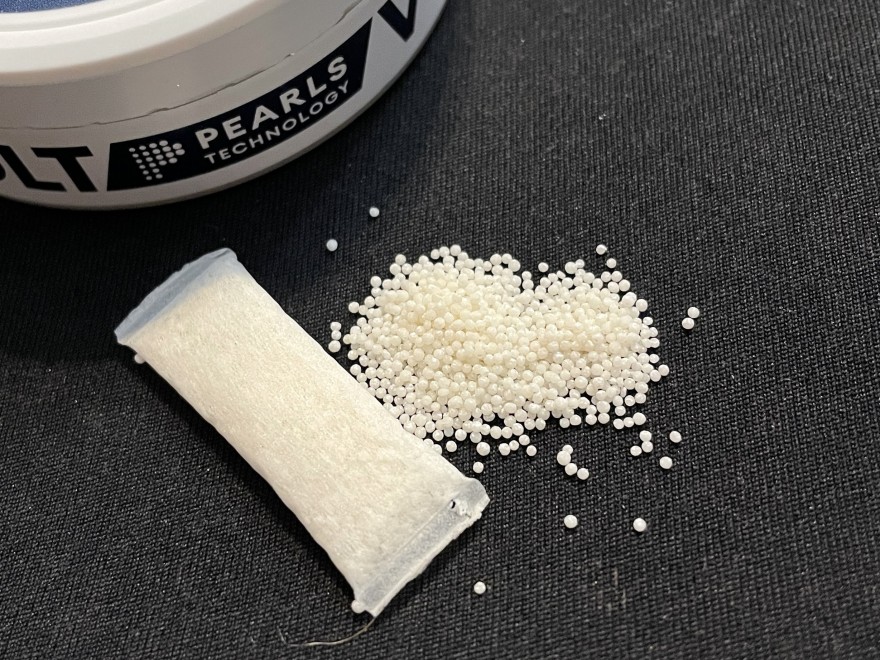Summary
The government appears poised to allow the sale of oral tobacco and nicotine products in Aotearoa New Zealand (NZ). These products include chewing tobacco, snus, and nicotine pouches. In recent years, the tobacco industry has invested heavily in marketing flavoured tobacco-free oral nicotine products as youth lifestyle products, including NZ-specific promotion since early 2024. Deregulation of these products has uncertain benefits for New Zealanders, given lower-harm nicotine replacement therapy and vaping products are already widely available as alternatives for people who smoke, and the safety and efficacy of novel oral nicotine products is not yet clear. NZ currently has high levels of youth nicotine addiction, including among young people who have never smoked, and additional youth-targeted nicotine products are likely to exacerbate this problem.
The coalition Government has repealed NZ’s world-leading smokefree laws, against scientific evidence and public opinion. Its alternative plan for achieving the Smokefree 2025 goal remains unclear. However, Minister Costello is likely to propose allowing the sale of oral tobacco and nicotine products, a measure included in the National-NZ First Coalition Agreement (see Appendix). This Briefing provides an overview of these products, with more detailed information on safety, efficacy and marketing to come in subsequent briefings.
What are oral tobacco products?
Oral tobacco products include chewing tobacco and tobacco pouches or ‘snus’ (Figure 1). They are made from tobacco and have been used in many parts of the world for hundreds of years.1 For example, snus (finely ground tobacco leaves, placed between the gum and the lip) was developed commercially about 200 years ago in Sweden and remains widely used there,2 while chewing tobacco has long been part of the tobacco market in the USA and many South Asian countries.1 3 In contrast, NZ has disallowed the sale of oral tobacco products for more than three decades [see Appendix]. New Zealanders may import these products from overseas websites for personal use, but use is believed to be rare.
Oral tobacco products are thought to be less dangerous than smoked tobacco but are addictive and are associated with oral health problems and several cancers including oral, oesophageal, stomach, pancreatic cancers.4-6
Figure 1: Oral tobacco products, made from tobacco leaf
What are oral nicotine products?
Since about 2009, novel tobacco-free oral products have emerged including nicotine pouches (Figure 2) and dissolvable ‘pearls’, available in many different flavours and nicotine strengths. These products contain nicotine -- either synthetic or extracted from tobacco -- but not tobacco. Experience from the USA and Australia, where they have been recently introduced, suggests oral nicotine products are often marketed to appeal to young people.7 Examples of product presentation are shown in Figure 3.
Figure 2: Tobacco-free nicotine pouches (credit: snubie.com)
Figure 3: Oral nicotine flavours and marketing, pouches (left) and pearls (right)
Tobacco industry targets NZ youth with new ‘tobacco-free’ products
Internationally, tobacco companies have taken advantage of legal loopholes to diversify into oral nicotine products and expand their customer base. Major brands in the nicotine pouch market are Velo and Lyft owned by British American Tobacco (BAT) and Zyn owned by Philip Morris.
In the USA, Zyn pouches have been heavily marketed online since early/mid-2023 using “Zynfluencers” – celebrities paid to feature the brand in their social media content, creating a “buzz” around the product. Because of the global nature of the internet, NZ youth are exposed to international content, potentially including ZYN promotions. In addition, since January 2024, Zyn has targeted NZ youth directly via ZYN NZ social media accounts (Figure 4), which promote sales via the ZYN NZ website. In an apparent breach of NZ law, nicotine pouches have been sold online from this website since at least early 2024.
Figure 4: TikTok content targeting New Zealand youth
Current NZ law on oral tobacco and nicotine products
The Smokefree Environments and Regulated Products Act 1990 disallows sale of oral tobacco and nicotine products, with the exception of nicotine replacement therapy (NRT), e.g., nicotine gum, lozenges (see Appendix). NRT is permitted as a therapeutic product under the Medicines Act 1981, which requires manufacturers to demonstrate the products meet strict safety and efficacy requirements.
How harmful are oral tobacco and nicotine products?
As noted above, traditional oral tobacco products are known to be addictive, increase cancer risk and cause oral health problems. Very little research has been done on the long-term safety of new generation oral nicotine products.
Tobacco-free oral nicotine products are almost certainly less dangerous than smoked tobacco. They may pose fewer physical harms than heat-not-burn and vaping products, since they do not involve inhaling toxicants into sensitive lung tissue. However, evidence is lacking and to date they have been marketed primarily as lifestyle products for young people, rather than as smoking cessation tools.7 8
Philip Morris is now facing a law suit in the USA where the plaintiff alleges that ZYN has caused him addiction and oral health problems, and was promoted to young people on social media without appropriate health warnings.
Does New Zealand need more nicotine products?
Evidence that nicotine pouches can help people to quit smoking is currently very limited. In contrast, there is a strong evidence base for the efficacy and relative safety of NRT,9 10 which has been available free through Stop Smoking services for many years. Nicotine vaping products are also widely available at low cost, with some evidence of efficacy.11
Given the existing availability of NRT and vapes, the lack of evidence about non-tobacco oral nicotine products’ safety and efficacy, and the difficulty of protecting young people from predatory online marketing, the case for allowing their sale in NZ appears weak.
This country has the highest youth vaping rates in the world; one-in-ten Year 10 students (14-15 years) and one-in-four young adults (18-24 years) vape daily.12 13 There is a high risk that flavoured oral tobacco and nicotine products will add to the problem of youth nicotine addiction.
Oral tobacco and nicotine products should remain unlawful until there is clear evidence that any benefits outweigh the obvious risks, and, if that evidence accumulates, they should be regulated via the Medicines Act 1981.
What’s new in this Briefing
- The government is poised to allow the sale of oral tobacco and nicotine products in Aotearoa New Zealand (NZ).
- These products include flavoured nicotine pouches, which are being heavily marketed to young people by the tobacco industry.
- ZYN pouches (owned by Philip Morris) have been specifically marketed to NZ youth and sold online in NZ since at least early 2024, in apparent breach of NZ law.
Implications for public policy
- Public policy must protect young people from predatory marketing of addictive products, and restrictions must be vigorously enforced
- Deregulation of addictive oral tobacco and nicotine products poses a clear risk to the wellbeing of New Zealand youth; any benefits to smokers are unclear, given a range of lower-harm nicotine products are already available to support smoking cessation.
Authors details
Dr Jude Ball, ASPIRE Aotearoa Research Centre, and Senior Research Fellow, Department of Public Health, University of Otago Wellington
Dr Janine Nip, Public Health Research Fellow at the Department of Public Health, University of Otago, Wellington, New Zealand
Prof Janet Hoek, Co-Director of ASPIRE Aotearoa Research Centre, and Department of Public Health, University of Otago Wellington
Prof Richard Edwards, Co-Director of ASPIRE Aotearoa Research Centre, and Department of Public Health, University of Otago Wellington
Appendix
Wording of the relevant clause in the National - NZ First coalition agreement
“Reform the regulation of vaping, smokeless tobacco and oral nicotine products while banning disposable vaping products and increasing penalties for illegal sales to those under 18.”
Wording of the relevant clauses of the Smokefree Environments and Regulated Products Act (1990)
Section 54: Restrictions on advertising, labelling, and sale of oral use products
(1) A person must not publish a regulated product advertisement that directly or indirectly states or suggests that a regulated product is suitable for chewing or for any other oral use.
(2) A person must not import for sale, sell, pack, or distribute any regulated product labelled or otherwise described as suitable for chewing, or for any other oral use.
(3) A person must not import for sale, sell, pack, or distribute any regulated product suitable for chewing or for any other oral use unless the Minister of Health has given consent or provisional consent to the distribution of the product under the Medicines Act 1981.
(4) A person who, without reasonable excuse, contravenes subsection (1), (2), or (3) commits an offence and is liable,—
(a) in the case of a manufacturer, an importer, or a distributor, to a fine not exceeding $10,000; or
(b)in any other case, to a fine not exceeding $5,000.
(5) In this section, oral use, in relation to a product, means the absorption of the product primarily through the oral mucosa.
How to report non-compliant websites or nicotine products
Members of the public can report concerns about potentially non-compliant oral tobacco, oral nicotine or vaping products, or websites selling such products via: tobacco@health.govt.nz or vaping@health.govt.nz



